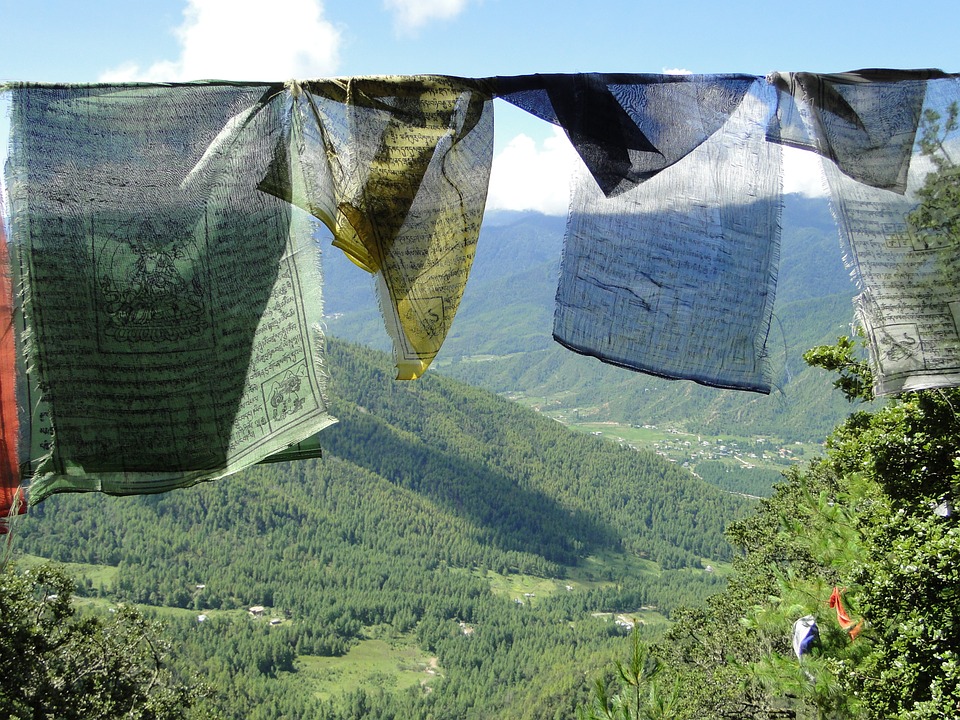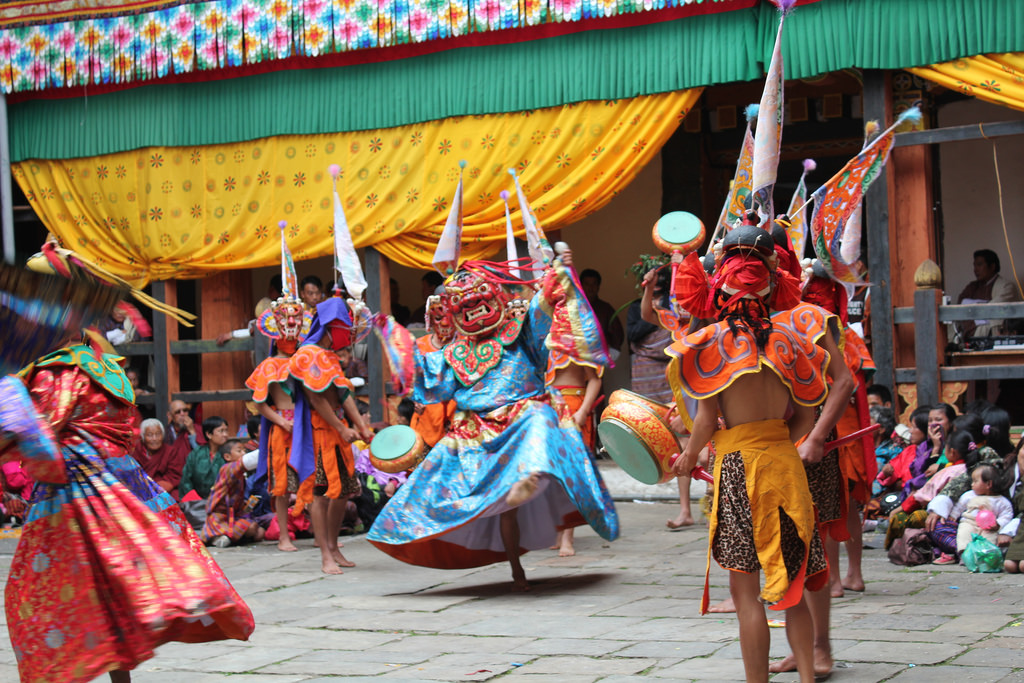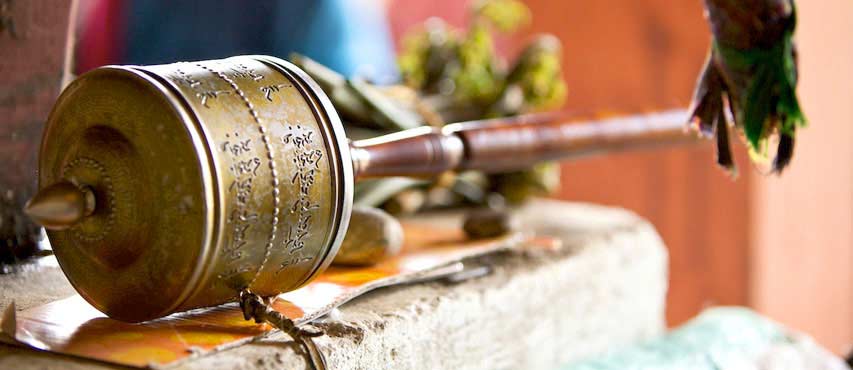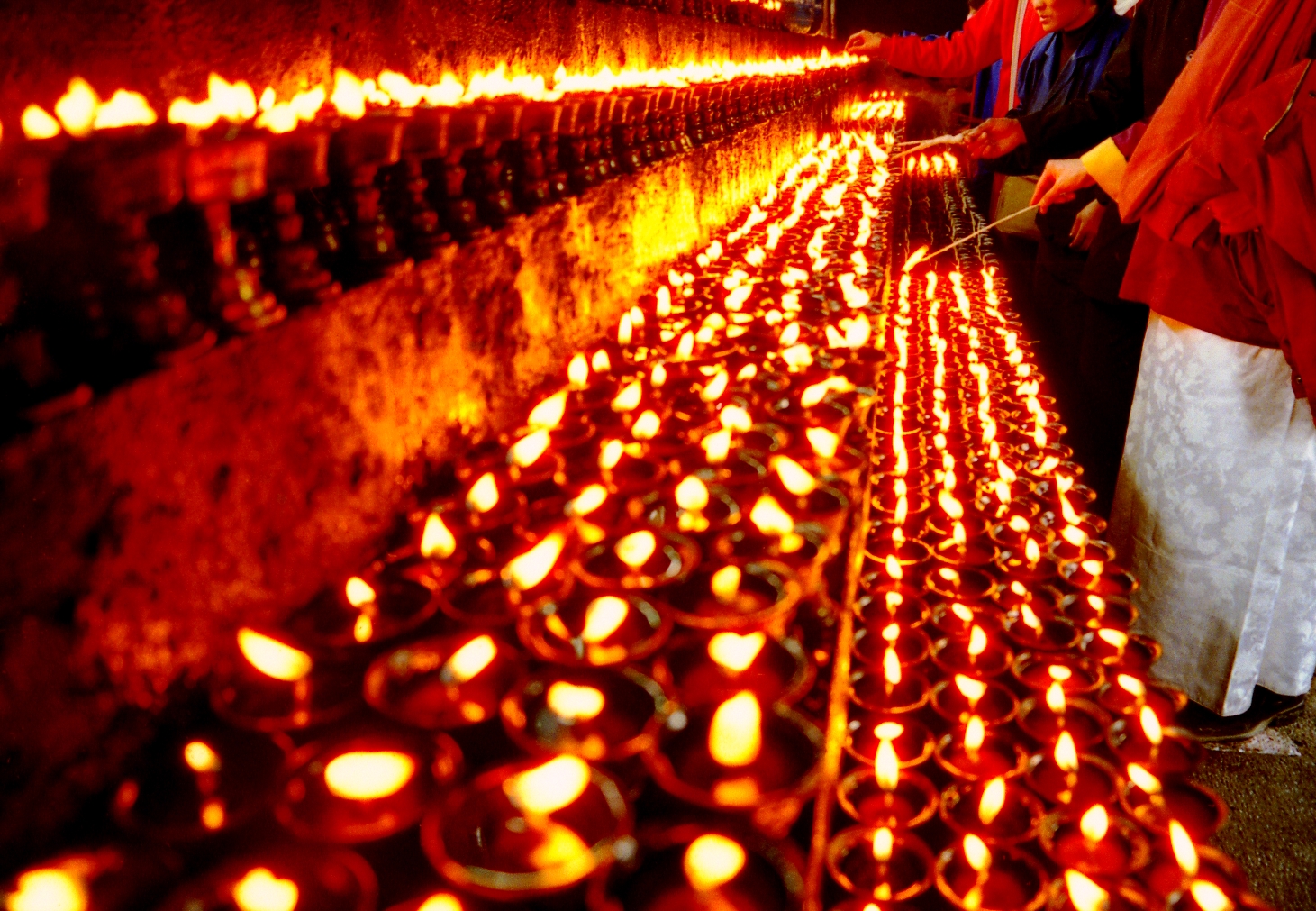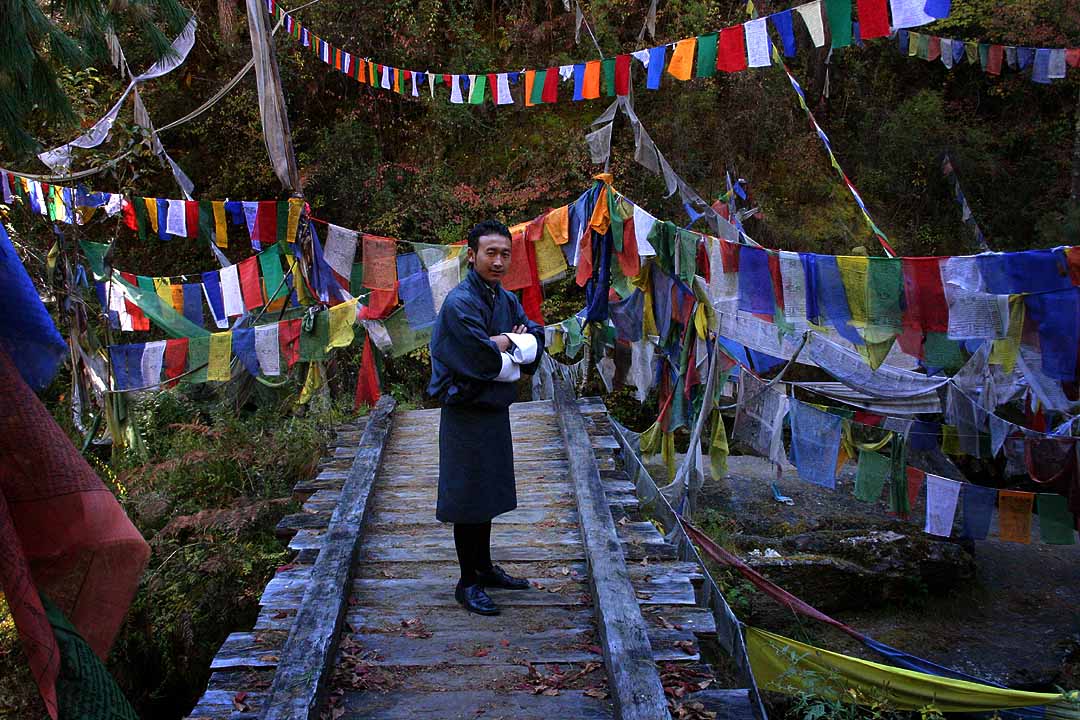Bhutan: The Land of the Thunder Dragon, of the Tiger’s Nest, of Gross National Happiness… Bhutan is at the same time mysterious and unfathomable, warm and wholly accessible.
Bhutan’s uniqueness stems from its virtual isolation from the rest of the world until relatively recently. Its people, culture, and religious festivals are a testimony to a rich way of life which has changed little for over a thousand years.
Monuments to its rich history and Buddhist tradition are visible throughout the landscape, and its people are a living memory of a way of life long past in most of the rest of the world.
November 6-17, 2019. $5400 for land package: hotels, all in-country transportation, all activities, and all meals. Air from Bangkok is $850. Bhutan Visa fee is $50.
DAY 1 – November 6

Arrive at Paro International Airport from Bangkok. Paro is situated in a beautiful valley at 2280 metres and is a fitting introduction to this charming kingdom. Your guide will meet you and take you on a short one-hour drive along the Paro and Thimphu river valleys to Thimphu, Bhutan’s capital, at 2320 metres. You can stop on the way to take in the magnificent Tamchhog Lhakhang, the hereditary place of worship for Bhutan’s iron bridge builder. Take a late afternoon walk around town and soak in the atmosphere of this magical capital with its busy shops and bazaars and photogenic citizens in national dress.
Overnight in Thimphu

DAY 2 – November 7
 Thimphu sightseeing. We will visit the revered Memorial Chorten, the National Library and the School of Traditional Arts. You could visit Changangkha temple, perched on the hilltop overlooking the town. Devotees flock throughout the day to circumambulate and turn the prayer wheels. The temple also contains beautiful wall paintings and hundreds of religious scriptures written in gold. In the afternoon you can take in more of the sights and culture of the capital, with the option of a trip to Simtokha Dzong (one of the oldest fortresses in Bhutan, dating from 1629 AD). If you prefer to stay closer to town you could drive up to the Radio Tower (offering splendid views of the city from a hilltop festooned with prayer flags), visit the Takin Reserve showcasing the unique national animal, the Takin, browse the striking collection of intricate textiles at the National Textile Museum or visit the Folk Heritage Museum.
Thimphu sightseeing. We will visit the revered Memorial Chorten, the National Library and the School of Traditional Arts. You could visit Changangkha temple, perched on the hilltop overlooking the town. Devotees flock throughout the day to circumambulate and turn the prayer wheels. The temple also contains beautiful wall paintings and hundreds of religious scriptures written in gold. In the afternoon you can take in more of the sights and culture of the capital, with the option of a trip to Simtokha Dzong (one of the oldest fortresses in Bhutan, dating from 1629 AD). If you prefer to stay closer to town you could drive up to the Radio Tower (offering splendid views of the city from a hilltop festooned with prayer flags), visit the Takin Reserve showcasing the unique national animal, the Takin, browse the striking collection of intricate textiles at the National Textile Museum or visit the Folk Heritage Museum. You may also like to visit the newly opened postal museum, detailing the history of Bhutan’s postal system and showcasing Bhutan’s rich assortment of interesting stamps. If you would like to view or buy Bhutanese handicrafts you may like to visit the new market opposite Taj Tashi hotel which has an array of stalls run by local handicraft shops selling purely home made articles with no imports. Our guide will discuss the plan for the day with the group.
You may also like to visit the newly opened postal museum, detailing the history of Bhutan’s postal system and showcasing Bhutan’s rich assortment of interesting stamps. If you would like to view or buy Bhutanese handicrafts you may like to visit the new market opposite Taj Tashi hotel which has an array of stalls run by local handicraft shops selling purely home made articles with no imports. Our guide will discuss the plan for the day with the group.
Overnight in Thimphu
DAY 3- November 8

 In the morning we will have the opportunity to try the national sport of archery, using traditional bamboo bows. We may also introduce you to Khuru – the Bhutanese form of darts. Late morning drive approximately 3 hours to the old capital, Punakha, via Dochu La pass at 3050 metres, where we will stop for a hot drink and enjoy spectacular panoramic views of the Eastern Himalaya ranges. You will notice the change of climate and vegetation as we approach low-lying Punakha at 1250 metres. Take a pleasant walk for an hour or so across terraced fields to Chimi Lhakhang (Temple of Fertility) built in the 15th century by the ‘Divine Madman’ (Lama Drukpa Kuenley).
In the morning we will have the opportunity to try the national sport of archery, using traditional bamboo bows. We may also introduce you to Khuru – the Bhutanese form of darts. Late morning drive approximately 3 hours to the old capital, Punakha, via Dochu La pass at 3050 metres, where we will stop for a hot drink and enjoy spectacular panoramic views of the Eastern Himalaya ranges. You will notice the change of climate and vegetation as we approach low-lying Punakha at 1250 metres. Take a pleasant walk for an hour or so across terraced fields to Chimi Lhakhang (Temple of Fertility) built in the 15th century by the ‘Divine Madman’ (Lama Drukpa Kuenley).  Then we will visit the imposing Punakha Dzong, “Palace of Great Happiness”. Built in 1637, it is strategically placed at the confluence of two rivers, the Po Chu and the Mo Chu.
Then we will visit the imposing Punakha Dzong, “Palace of Great Happiness”. Built in 1637, it is strategically placed at the confluence of two rivers, the Po Chu and the Mo Chu.
Overnight in Punakha
DAY 4- November 9
 Take a picturesque day hike to Jiligang temple. First we hike across the suspension bridge to the beautiful temple of Khamsum Yuelley Namgyel Chorten on a ridge above the Punakha valley. You can see many different species of trees and plants as you proceed along the path including rhododendrons, fern and bamboo. When we reach the Chag Nyi pass (at about 2200 metres) we stop for lunch with views of Yebisa and Kabesa valleys below. From here descend gradually to Jiligang temple (meaning hill of the cat), which was constructed by Lam Drukpa Kuenley in the middle of the 15th century when Buddhism was flourishing in western Bhutan. Inside the temple in the main stupa is a statue of the God of compassion and the Lama Drukpa Kuenley himself. The temple is now privately owned by the descendants of the Lama. Below is the valley of Samdzingkha where local farmers tend their crops. Continue the descent towards the impressive Punakha Dzong where your hike ends and your driver will be waiting for you. The hike is roughly 12 km and should take around 5 hours. [It is possible to shorten the walk if the group members are less active.]
Take a picturesque day hike to Jiligang temple. First we hike across the suspension bridge to the beautiful temple of Khamsum Yuelley Namgyel Chorten on a ridge above the Punakha valley. You can see many different species of trees and plants as you proceed along the path including rhododendrons, fern and bamboo. When we reach the Chag Nyi pass (at about 2200 metres) we stop for lunch with views of Yebisa and Kabesa valleys below. From here descend gradually to Jiligang temple (meaning hill of the cat), which was constructed by Lam Drukpa Kuenley in the middle of the 15th century when Buddhism was flourishing in western Bhutan. Inside the temple in the main stupa is a statue of the God of compassion and the Lama Drukpa Kuenley himself. The temple is now privately owned by the descendants of the Lama. Below is the valley of Samdzingkha where local farmers tend their crops. Continue the descent towards the impressive Punakha Dzong where your hike ends and your driver will be waiting for you. The hike is roughly 12 km and should take around 5 hours. [It is possible to shorten the walk if the group members are less active.]
Overnight in Punakha
DAY 5- November 10
Drive approximately 4 hours to Gangtey at 2900 metres. Enjoy the views of the immense and remote Phobjikha valley and the black mountain ranges. Visit Gangtey Gompa (one of Bhutan’s oldest monasteries and recently extensively renovated) and explore the valley where the villagers continue to live a traditional Bhutanese rural lifestyle. This is the site where black-necked cranes visit in their hundreds in November each year after spending the summer in Tibet. This afternoon you can do a nature walk and cultural tour of the valley visiting Semchubara and Khewang villages along the way.
Overnight in Gangtey
DAY 6- November 11
 Today you can spend the whole day at the Crane Festival in Gangtey with local villagers. A special day as it is also the Birth Anniversary of His Majesty the Fourth King. The festival takes place in the courtyard of the monastery, which has recently been extensively renovated. There will be some official rituals, such as flag raising and welcome ceremonies, are conducted, followed by folk culture displays. An amazing opportunity to see a local cultural experience. Local food will be available at stalls.
Today you can spend the whole day at the Crane Festival in Gangtey with local villagers. A special day as it is also the Birth Anniversary of His Majesty the Fourth King. The festival takes place in the courtyard of the monastery, which has recently been extensively renovated. There will be some official rituals, such as flag raising and welcome ceremonies, are conducted, followed by folk culture displays. An amazing opportunity to see a local cultural experience. Local food will be available at stalls.
Overnight in Gangtey
DAY 7- November 12
 Today we start early to return to Paro, a drive of approximately 7 hours. In the afternoon there will be time to visit some handicraft shops to purchase some souvenirs of your trip. You can also visit the weekly market and you may be able to catch an archery match at the local ground. Then we can arrange for you to visit a local farmhouse allowing you to experience traditional Bhutanese village life. Take the opportunity to try the restorative properties of a hot stone bath. We will arrange for the group to take tea or dinner with the family and then you can return to your hotel.
Today we start early to return to Paro, a drive of approximately 7 hours. In the afternoon there will be time to visit some handicraft shops to purchase some souvenirs of your trip. You can also visit the weekly market and you may be able to catch an archery match at the local ground. Then we can arrange for you to visit a local farmhouse allowing you to experience traditional Bhutanese village life. Take the opportunity to try the restorative properties of a hot stone bath. We will arrange for the group to take tea or dinner with the family and then you can return to your hotel.
Overnight in Paro
DAY 8 – November 13
 This morning you can visit the impressive Paro Rinpung Dzong, one of the finest examples of Bhutanese architecture. You can also visit the National Museum. This was previously housed in the Ta Dzong (watch tower) built on top of the hill above Rinpung Dzong to defend Rinpung Dzong and the Paro valley during times of war, in an unusual circular construction resembling a conch shell. Unfortunately, an earthquake in September 2011 damaged the Ta Dzong and the contents of the museum were moved to a neighbouring building. You can still see a magnificent collection of Bhutanese artefacts – costumes, religious paintings, arms, textiles and a fascinating collection of Bhutan stamps. The National Museum is due to reopen in the Ta Dzong in 2017. Near to the museum you may also be able to see a demonstration of traditional wood turning skills by local artisans who make traditional wooden bowls and cups – and you can try your hand as well if you wish. Nearby you can also visit the 7th century Kyichu Lhakhang, a temple of historical significance and one of the most sacred shrines in Bhutan.
This morning you can visit the impressive Paro Rinpung Dzong, one of the finest examples of Bhutanese architecture. You can also visit the National Museum. This was previously housed in the Ta Dzong (watch tower) built on top of the hill above Rinpung Dzong to defend Rinpung Dzong and the Paro valley during times of war, in an unusual circular construction resembling a conch shell. Unfortunately, an earthquake in September 2011 damaged the Ta Dzong and the contents of the museum were moved to a neighbouring building. You can still see a magnificent collection of Bhutanese artefacts – costumes, religious paintings, arms, textiles and a fascinating collection of Bhutan stamps. The National Museum is due to reopen in the Ta Dzong in 2017. Near to the museum you may also be able to see a demonstration of traditional wood turning skills by local artisans who make traditional wooden bowls and cups – and you can try your hand as well if you wish. Nearby you can also visit the 7th century Kyichu Lhakhang, a temple of historical significance and one of the most sacred shrines in Bhutan.
Overnight in Paro
DAY 9- November 14
 Today we will drive to Haa at 2670 metres – the drive is around 3 hours and crosses the Chele La pass at 3800m, from where you will have a view of Mount Jomolhari to the north as well as down to the Haa valley. If you wish you can stop for a hike at Chele La – from the road you can walk up for 5 minutes towards a small stupa and then follow an old trail downhill for around 2 hours through rhododendron and hemlock forest towards Kila Gompa, a nunnery inhabited by about 30 nuns, who live a life of contemplation and seclusion, with daily prayer and spiritual practice. The community is one of the oldest of seven nunneries in Bhutan and was initially established in the early 9th century as a meditation site. The main temple houses ancient statues of
Today we will drive to Haa at 2670 metres – the drive is around 3 hours and crosses the Chele La pass at 3800m, from where you will have a view of Mount Jomolhari to the north as well as down to the Haa valley. If you wish you can stop for a hike at Chele La – from the road you can walk up for 5 minutes towards a small stupa and then follow an old trail downhill for around 2 hours through rhododendron and hemlock forest towards Kila Gompa, a nunnery inhabited by about 30 nuns, who live a life of contemplation and seclusion, with daily prayer and spiritual practice. The community is one of the oldest of seven nunneries in Bhutan and was initially established in the early 9th century as a meditation site. The main temple houses ancient statues of  Chenrezig and Guru Rinpoche, among others. After visiting the nunnery you can return to the car, which takes around 15 minutes. Then continue your drive down into Haa town. Haa has only recently opened to tourists and the town is still very small – as yet there are only one or two basic restaurants and local lodges, so the area remains quite remote. A great opportunity to view this beautiful rural scene. From Haa you can walk to Katso village and from there you can visit Lhakhang Karpo and Lhakhang Nagpo.
Chenrezig and Guru Rinpoche, among others. After visiting the nunnery you can return to the car, which takes around 15 minutes. Then continue your drive down into Haa town. Haa has only recently opened to tourists and the town is still very small – as yet there are only one or two basic restaurants and local lodges, so the area remains quite remote. A great opportunity to view this beautiful rural scene. From Haa you can walk to Katso village and from there you can visit Lhakhang Karpo and Lhakhang Nagpo.
Overnight in Haa
DAY 10- November 15
 Today you can take a three-hour hike to Juneydrak Hermitage. The walk is through rhododendron forest with fine views. The cliff-side retreat contains a footprint of a female Tibetan tantric practitioner. If monks are meditating in the Hermitage you will not be able to go in, but it is a lovely walk. Return to Paro for the night.
Today you can take a three-hour hike to Juneydrak Hermitage. The walk is through rhododendron forest with fine views. The cliff-side retreat contains a footprint of a female Tibetan tantric practitioner. If monks are meditating in the Hermitage you will not be able to go in, but it is a lovely walk. Return to Paro for the night.
Overnight in Paro
DAY 11- November 16
 Take a day walk to the ‘Tiger’s Nest’, the sacred Taktshang monastery which clings to the rock face 900 metres above the valley floor. Guru Rinpoche is said to have flown to the site riding on a tigress. He subsequently meditated here for three months. It is one of Bhutan’s most holy sites and draws pilgrims not only from Bhutan but also from neighbouring Buddhist countries. You can have lunch at the Taktshang cafeteria from where you get a spectacular view of the monastery. Afterwards you may also have time to visit Dumtse Lhakhang, a temple built by Thangtong Gyalpo, the iron bridge builder.
Take a day walk to the ‘Tiger’s Nest’, the sacred Taktshang monastery which clings to the rock face 900 metres above the valley floor. Guru Rinpoche is said to have flown to the site riding on a tigress. He subsequently meditated here for three months. It is one of Bhutan’s most holy sites and draws pilgrims not only from Bhutan but also from neighbouring Buddhist countries. You can have lunch at the Taktshang cafeteria from where you get a spectacular view of the monastery. Afterwards you may also have time to visit Dumtse Lhakhang, a temple built by Thangtong Gyalpo, the iron bridge builder.
Overnight in Paro
DAY 12- November 17
Early in the morning your guide will accompany you to the airport to see you off onto your flight and wish you Tashi Delek (goodbye and good luck).

